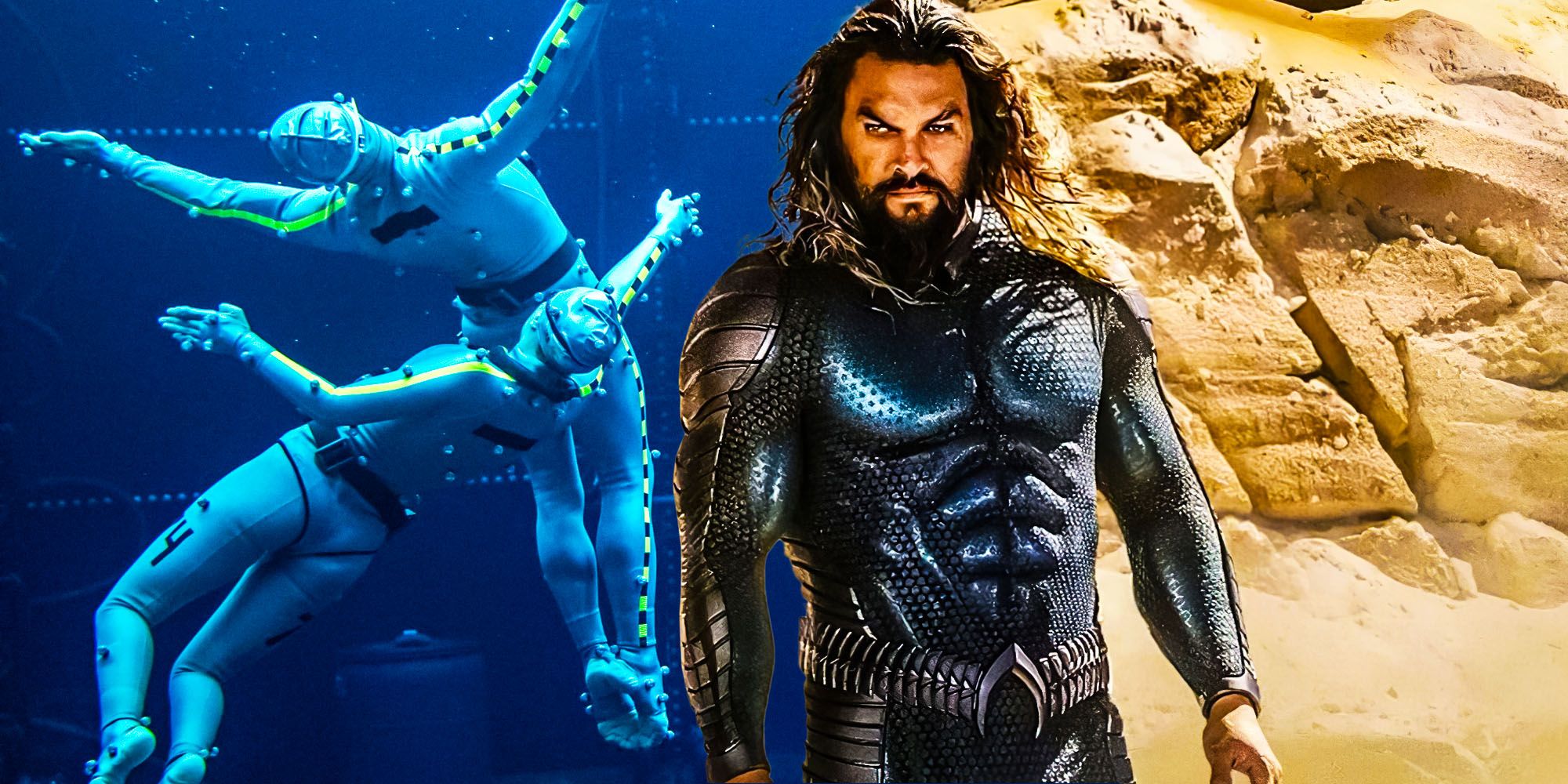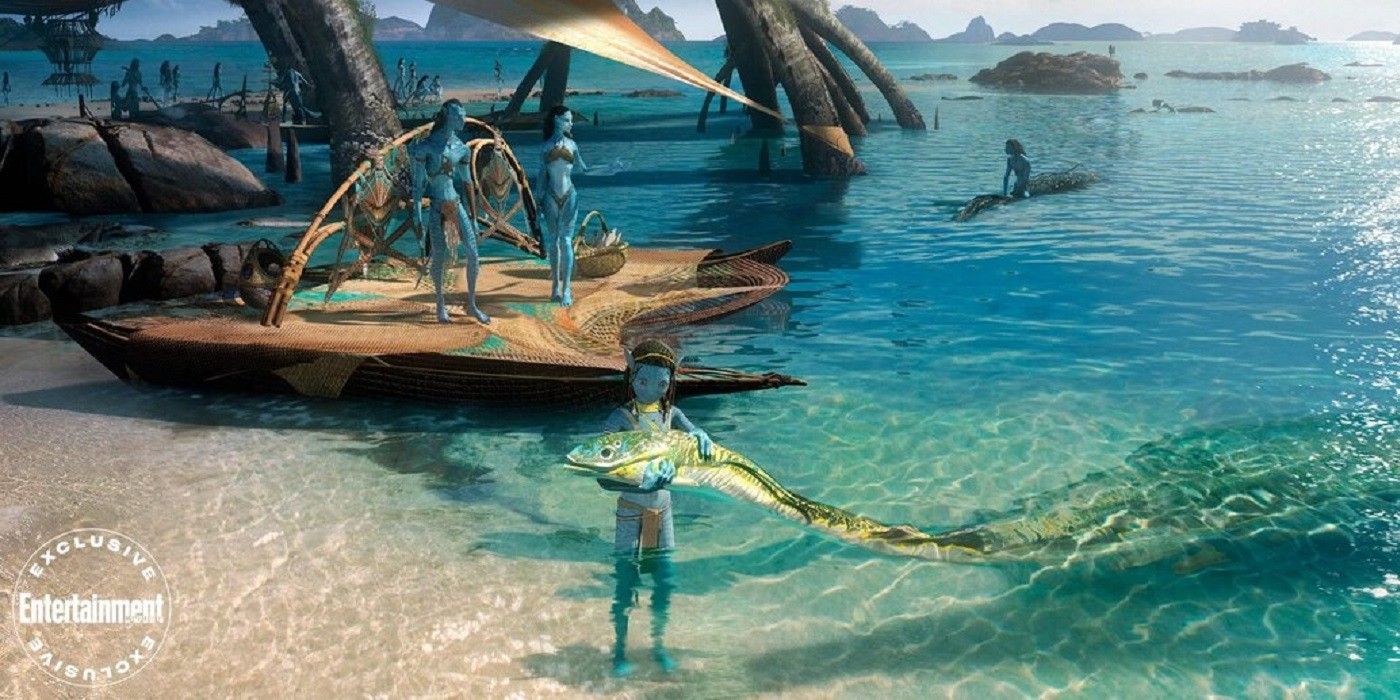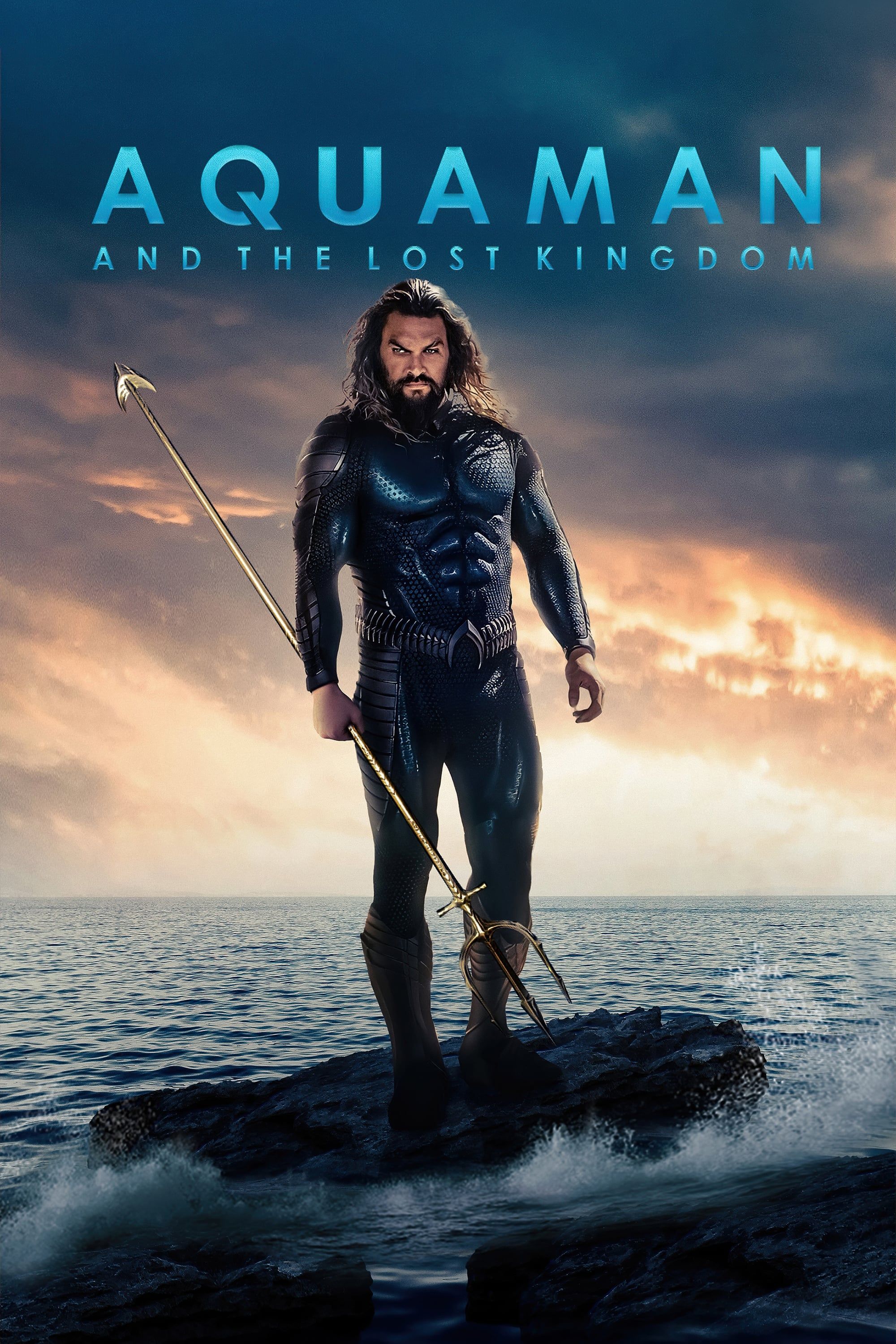The underwater motion capture technology that's being used to film Avatar 2 sounds amazing, but it's bad for Aquaman and the Lost Kingdom. Director James Cameron explained that the first of his four sequels for the box office-shattering Avatar movie would primarily take place underwater, both within the movie itself, and behind the scenes for its production. Years of groundbreaking technological research have gone into making the film, which will surely elevate the visuals of Avatar 2.
The first Avatar, which came out more than a decade ago, utilized motion capture filming techniques that were considered groundbreaking at the time. Despite many people's skepticism of the impressive budget and new technology, Avatar broke multiple box office records, encouraging Cameron to continue the franchise and the trend of revolutionizing the ways in which a movie can be made. While this filmmaking approach is great news for the Avatar sequel, it could be a problem for one other big underwater-based film in Aquaman 2.
Cameron described a clear difference between his filming technique for Avatar 2, and the traditional method used for underwater scenes. Much of Avatar 2's filming occurred within a 900,000-gallon tank that could mimic ocean currents, and the actors had to learn to free dive—holding their breath for minutes at a time—because air bubbles and scuba technology would have interfered with the motion capture process. Later, visual effects artists had to animate the tiniest expressions on actors' faces while they were underwater. This was undeniably a huge task, and Cameron said that many tried to talk him out of his plan:
"My colleagues within the production really lobbied heavily for us to do it 'dry for wet,' hanging people on wires. I said, 'It's not going to work. It's not going to look real.' I even let them run a test, where we captured dry for wet, and then we captured in water, a crude level of our in-water capture. And it wasn't even close."
If Cameron's efforts with Avatar 2 result in something even remotely as groundbreaking as the first movie, then it stands to be a highly successful sequel film, which doesn't bode well for Aquaman 2's incorporation of traditional motion capture methods for its underwater scenes. Unlike Avatar 2, which filmed its actors as they were actually submerged underwater, the cast for Aquaman 2 was suspended in the air on wires to imitate water's effects, and later editing will help make their environment look more like the ocean. Yet, according to Cameron, the final result is not even close. Considering that both movies are releasing on the same day in 2022, viewers won't be able to avoid comparing them, likely noting the sharp difference in quality or immersiveness.
Releasing two movies that both take place underwater on the samde day is bound to encourage comparisons. Unfortunately for the Aquaman 2 movie environment, the innovative motion capture technology techniques Cameron has implemented for Avatar 2 will likely make the superhero's sequel movie look far less realistic. Hopefully, Aquaman and the Lost Kingdom's story and characters will be compelling enough that no one watching will care enough to notice.



